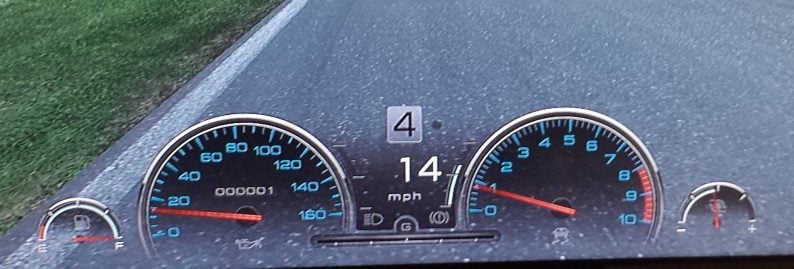Something that has annoyed me for a while in GT is the implementation of boost and in consequence turbo lag.
Now in GT, the amount of boost you receive when you press the throttle seems related to the throttle percentage but not ( and importantly ) mapped correctly to the rpms at which the accelerator is pressed.
Most cars only start to generate boost at a certain rpm, lower for diesels and modern cars. Higher for older more laggy motors.
For instance an MR2 Turbo will start to generate boost at say 2750-3000rpm with peak psi arriving at 4500rpm. In GT you can press the throttle half way and generate almost half its max psi boost at 1500-2000rpm in 4th gear, instantly as soon as you press the throttle half way and more by pressing the throttle further. This isn't really possible and neither is the instant movement of the boost meter with the thrittle pedal. It can take half a second after pressing the gas to see a real boost gauge start to move positively - actual lag - in GT it happens instantaneously.
Here is a skyline R34 MNP building a significant amount of boost with 1/2 throttle, in 4th gear at 900 rpm. No turbo is spooling on a 2000 car at less than 2000rpm.

Modern cars with better ECU and small turbos might be kicking in and starting to build boost at 1500-2000 rpm ranges and have a faster turbo response to throttle but the larger turbos on the older cars were not designed to operate in this way. This makes turbo cars in GT perform better against NA cars than they should be able to because the lag doesn't actually happen, you get instantaneous response from the turbo. And that's on top of receiving boost at RPMS that you shouldn't be able too, making your torque curve larger in effect.
Now in GT, the amount of boost you receive when you press the throttle seems related to the throttle percentage but not ( and importantly ) mapped correctly to the rpms at which the accelerator is pressed.
Most cars only start to generate boost at a certain rpm, lower for diesels and modern cars. Higher for older more laggy motors.
For instance an MR2 Turbo will start to generate boost at say 2750-3000rpm with peak psi arriving at 4500rpm. In GT you can press the throttle half way and generate almost half its max psi boost at 1500-2000rpm in 4th gear, instantly as soon as you press the throttle half way and more by pressing the throttle further. This isn't really possible and neither is the instant movement of the boost meter with the thrittle pedal. It can take half a second after pressing the gas to see a real boost gauge start to move positively - actual lag - in GT it happens instantaneously.
Here is a skyline R34 MNP building a significant amount of boost with 1/2 throttle, in 4th gear at 900 rpm. No turbo is spooling on a 2000 car at less than 2000rpm.

Modern cars with better ECU and small turbos might be kicking in and starting to build boost at 1500-2000 rpm ranges and have a faster turbo response to throttle but the larger turbos on the older cars were not designed to operate in this way. This makes turbo cars in GT perform better against NA cars than they should be able to because the lag doesn't actually happen, you get instantaneous response from the turbo. And that's on top of receiving boost at RPMS that you shouldn't be able too, making your torque curve larger in effect.
Last edited:



